When “anti-racists” look at great art, they see only one thing.
By Mark Tapson, FRONT PAGE 23 February 2024
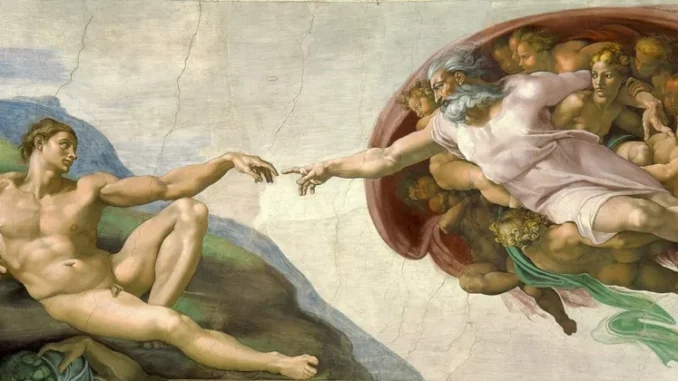
One of the great tragedies of progressivism is that its zealots are in the grip of – to borrow William Blake’s phrase – “mind-forged manacles.” Perpetually aggrieved by social injustice everywhere (real or imagined, past and present), leftists are hindered from finding selfless joy, spiritual transcendence, and wonder in the world by ideological blinders that allow them to see only a world of oppression, exploitation, and existential misery.
Take, for example, the famous image above – Italian Renaissance genius Michelangelo’s glorious Sistine Chapel vision of the moment God sparked life into the First Man, Adam. Whether you are Christian or not, no matter how you believe the world came into being and life began, when you look at this iconic work of art – especially when you are in its actual presence – are you not awed by Michelangelo’s humbling talent, and the painting’s majesty and beauty and power? Are you not drawn to ponder the miracles of creation and life depicted in this meeting of the human and the divine?
When Robin DiAngelo, author of the woke bestseller White Fragility, looks at this masterpiece, what she sees are the scourges of racism and patriarchy.
DiAngelo, who is white, is probably second only to Ibram X. Kendi in terms of name recognition among the more academic race hustlers of so-called “antiracism.” Her 2018 book White Fragility sat on the New York Times Bestseller List for over three years. She commands speaking fees of $40,000 or more to lecture self-loathing white progressives about their “unearned privilege” and “racial arrogance.” Her work or interviews, as her website notes, have been promoted in every left-wing media outlet imaginable, from The Guardian and CNN to NPR and the BBC.
White fragility is a condition DiAngelo has diagnosed afflicting white people who resent being called inherently racist, especially by actual racists like DiAngelo and Kendi. White fragility means if you don’t like being falsely smeared as a racist, then your denial is evidence that you are racist. If you are white, your worldview – whether consciously or unconsciously – is racist, and defending yourself against that hateful charge is just your fragility talking. “Antiracism” has made millionaires out of DiAngelo and Kendi.
DiAngelo argues that “White people raised in Western society are conditioned into a white supremacist worldview because it is the bedrock of our society and its institutions.” And “the single image I use to capture the concept of white supremacy,” she declared on a recent podcast, “is Michelangelo’s Sistine Chapel God creating man.”
She elaborated: “You know, where God is in a cloud and there’s all these angels and he’s reaching out and he’s touching — I don’t know who that is, David or something — and God is white and David’s white and the angels are white.” She added, “That is the perfect convergence of white supremacy, patriarchy, right?”
DiAngelo’s fields of expertise are Whiteness Studies and Critical Discourse Analysis. They certainly are not in art history or theology, as is revealed by her stunning ignorance of whose finger is stretching toward God’s in Michelangelo’s painting. The biblical King David was not the first man. The Garden of Eden was not inhabited by David and Eve.
In any case, DiAngelo explained that “I was raised Catholic so I saw many images like that as a child. So I’m sitting in church and I’m looking up and I see these images. I don’t think to myself ‘God is white’ but in a lot of ways that’s power. I don’t need to. God reflects me.”
What DiAngelo’s blinkered vision is excluding from consideration is the fact that artistic representations of God/Christ do not reflect only DiAngelo’s whiteness. Christians in every culture, not just Renaissance Europe, have always adapted their picture of Jesus to reflect themselves and their cultural norms.
Yes, the biblical figures in Michelangelo’s painting are depicted as white. This does not make it racial propaganda. We all know Jesus was a Levantine Jew, not a white man with blue eyes and sandy blond hair like actor Jeffrey Hunter, who portrayed Jesus in the 1961 Hollywood epic King of Kings. “The reason we see Jesus depicted as Caucasian,” according to an article at the Catholic Exchange, “has less to do with white supremacy and more to do with theology”:
The universal nature of His mission historically enabled every culture to see Christ according to their own unique cultural imagery—including race. Since Christ came for all men, people naturally depicted His physical characteristics after their own image and likeness. Since we in the West happen to live in a society grounded in European culture, we have viewed Christ as European. But if we were to travel to other cultures, we would see the opposite—Christ would be depicted according to each respective culture’s ethnic norms.
The images displayed below, helpfully collected and described at the aforementioned Catholic Exchange site, demonstrate this truth. The Christians of ancient Rome, for example, viewed Jesus as a Caucasian, beardless youth:
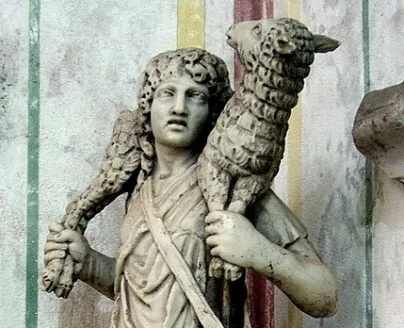
A Syrian image of Christ from the same era found in what is now Turkey shows a Syrian-looking Christ:
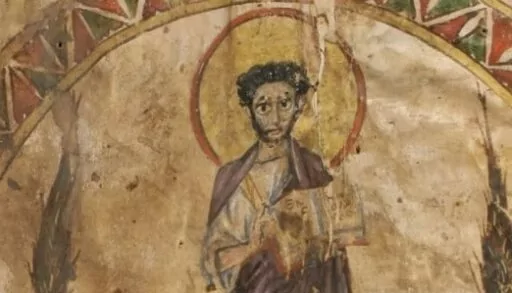
The Armenians viewed Jesus as a traditional Armenian father figure:
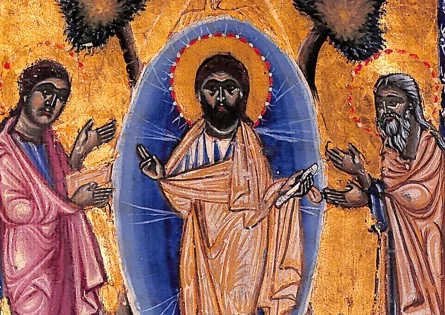
The Christ of the 9th century Irish Book of Kells appears distinctly Gaelic:
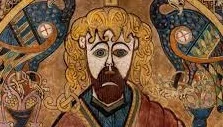
Here is Christ as an Indian sage from 9th century paintings found in China:
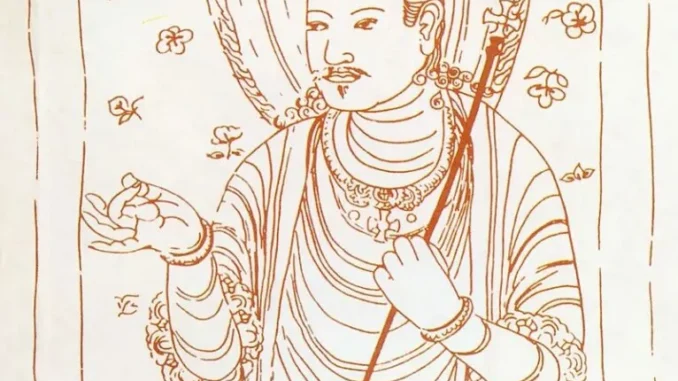
Another Chinese image from the 12th century portrays Jesus dressed and posed as a Buddhist holy man:
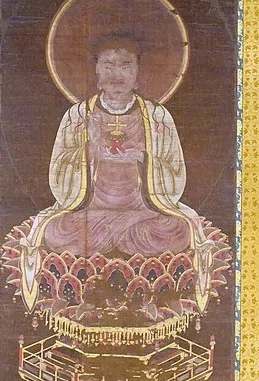
The Chinese depiction of Christ as a Chinese sage and his disciples as Chinese students was conventional down through the centuries. Here is a 19th century Chinese image of Jesus and the rich man:
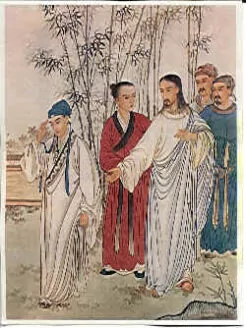
The most popular image of Christ among Filipinos is the Santo Niño:
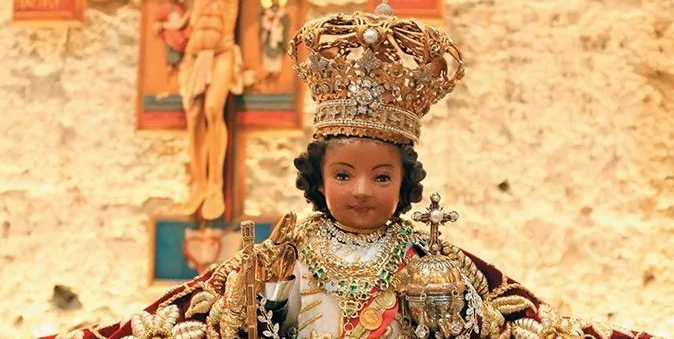
A Vietnamese Mary holding the Christ child:
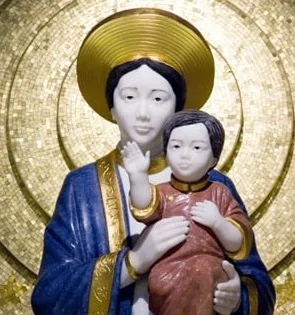
A black Christ from Ethiopia:
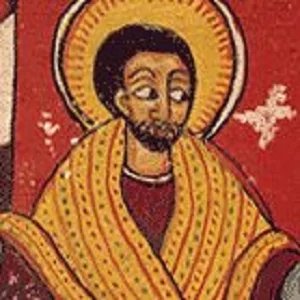
An image from the Copts of Egypt shows Jesus and His disciples as dark-skinned, some Semitic and some black:
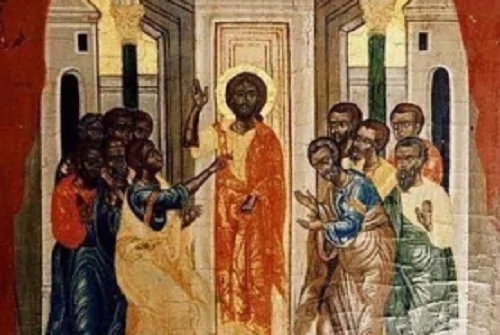
The oldest image of Christ produced in the Americas was created in 1539 by Aztec converts as a gift to the Franciscans of Mexico City. It contains Aztec iconography:
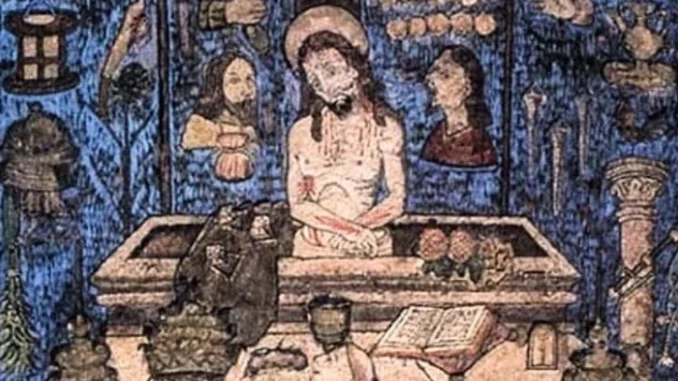
Christians the world over, throughout history, have visualized Christ from their own cultural perspective, no matter their skin color. At the same time they also recognize that Christ came to redeem all of us, and thus His racial identity – and ours – is of no significance.
But the “antiracist” racists view everything through the distorted lens of identity politics; hence, someone like Robin DiAngelo chooses to see, in Michelangelo’s magnificent painting of the Creation of Man, nothing but the white skin the left hates so much.
Follow Mark Tapson at Culture Warrior.



Leave a Reply
You must be logged in to post a comment.